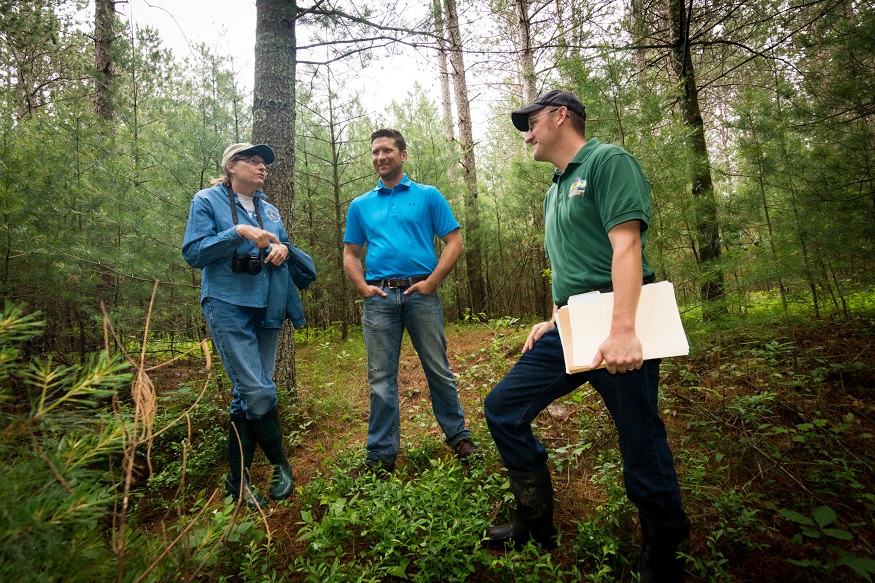Top 6 Ways To Ensure Forest Health
Forests are an invaluable part of the environment, providing us with numerous benefits, from providing us with oxygen, aiding in climate regulation, and offering a home to a vast array of wildlife. As such, it is our duty to do all we can to ensure the health of our forests, and to create and maintain a healthy and balanced ecosystem for all living creatures. This blog post will discuss the top 6 ways to ensure forest health and help us achieve a more sustainable future.
Natural Fire Management
Natural fire management by Forrest Health is a crucial component in preserving the health of forests. By allowing natural fires to occur, forests are given the opportunity to regenerate, restoring the balance of the ecosystem, as well as creating a healthier habitat for the wildlife within it. In addition, allowing natural fires to occur can also help to control the spread of invasive species, such as certain types of plants or animals. Natural fire management also helps to reduce the risk of large-scale, damaging fires, by allowing low-intensity fires to occur, which can help to maintain a healthy forest.
Reintroduction of Native Species
Reintroducing native species to forests is another important step in ensuring forest health. Native species can help maintain the balance of the ecosystem by providing food sources, as well as helping to prevent the spread of invasive species. Furthermore, reintroducing native species to forests can be beneficial in restoring the natural biodiversity of the forest, which is essential for sustaining a healthy environment. By reintroducing native species, we can create a more diverse forest and help to protect the existing wildlife.
Sustainable Logging Practices
Sustainable logging practices are essential for maintaining forest health. By logging only the amount of trees needed, and using sustainable practices, forests can be managed in a way that does not cause long-term damage, while still providing the necessary resources. Sustainable logging practices not only help to preserve the forest, but also help to reduce the environmental impact of human activity. By using sustainable logging practices, we can ensure that forests are harvested responsibly, and that they are managed in a way that is respectful to the environment.
Conservation of Biodiversity
Conservation of biodiversity is key for maintaining forest health. By protecting a variety of species, forests are able to maintain a healthy balance of the ecosystem, and create a safe habitat for wildlife. Conservation of biodiversity can also help prevent the spread of invasive species, which can be damaging to the health of a forest. In addition, conservation of biodiversity can help forests adapt to climate change and other environmental changes, ensuring that the forest remains healthy for generations to come. By protecting and conserving biodiversity, we can help to create a healthier and more diverse environment for all living creatures.
Reforestation
Reforestation is another important way to ensure forest health. By planting new trees, forests can be replenished and their health can be maintained. Reforestation also helps create a more diverse environment, which is essential for sustaining a healthy ecosystem, while also providing new sources of food and shelter for wildlife. Reforestation is also beneficial for reducing soil erosion, which can be damaging to the health of a forest. By replanting trees, we can help to restore forests and ensure they remain healthy for years to come.
Reduction of Pollution
Reducing pollution is also critical for ensuring forest health. By reducing air and water pollution, forests can remain healthy and provide a safe environment for wildlife. This can be achieved by reducing the amount of waste generated, and by implementing more eco-friendly practices, such as using renewable energy sources and avoiding the use of non-environmentally friendly materials. Reducing pollution also helps to preserve the water supply, as well as reducing air pollution, which can be damaging to the health of a forest. By reducing pollution, we can help to create a healthier environment for everyone.
Conclusion
These are the top 6 ways to ensure forest health. By following these tips, we can help maintain the health of our forests and ensure they remain healthy for the future. Taking action to protect our forests will not only help maintain a healthy environment for us, but also for future generations. By doing our part to protect our forests, we can ensure that they remain safe and healthy for many years to come, and we can help create a healthier, more sustainable future for all living creatures.



